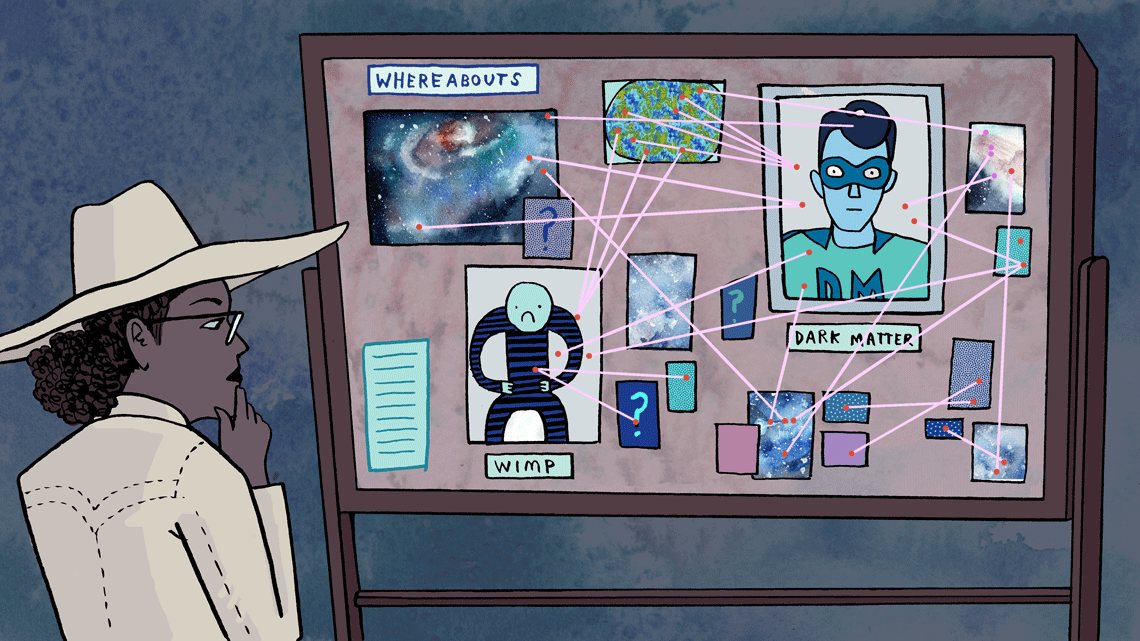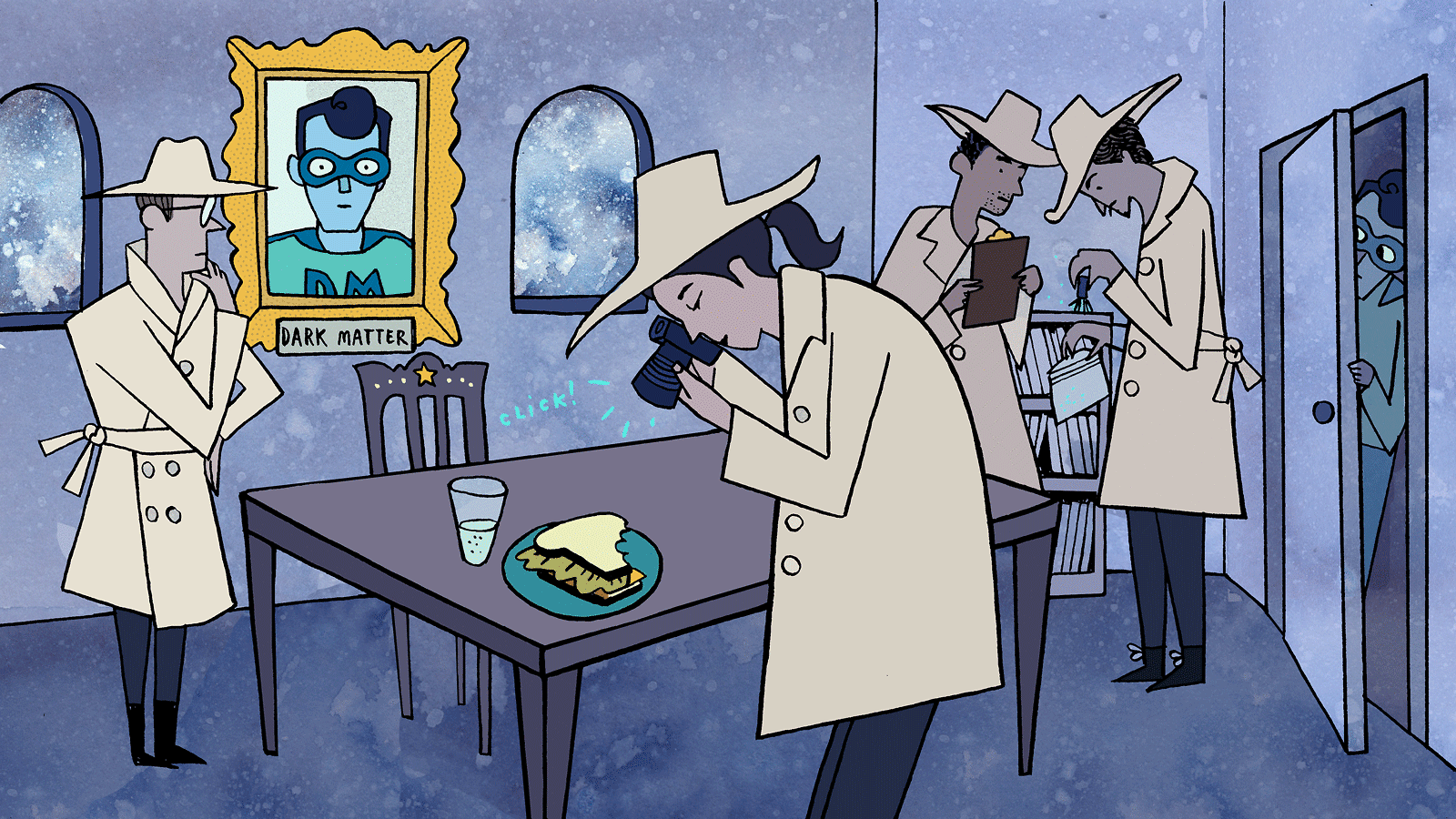Transitions are everywhere we look. Water freezes, melts, or boils; chemical bonds break and form to make new substances out of different arrangements of atoms.
The universe itself went through major transitions in early times. New particles were created and destroyed continually until things cooled enough to let them survive.
Those particles include ones we know about, such as the Higgs boson or the top quark. But they could also include dark matter, invisible particles which we presently know only because of their gravitational effects.
In cosmic terms, dark matter particles could be a “thermal relic,” forged in the hot early universe and then left behind during the transitions to more moderate later eras. One of these transitions, known as “freeze-out,” changed the nature of the whole universe.

The hot cosmic freezer
On average, today's universe is a pretty boring place. If you pick a random spot in the cosmos, it’s far more likely to be in intergalactic space than, say, the heart of a star or even inside an alien solar system. That spot is probably cold, dark and quiet.
The same wasn’t true for a random spot shortly after the Big Bang.
“The universe was so hot that particles were being produced from photons smashing into other photons, of photons hitting electrons, and electrons hitting positrons and producing these very heavy particles,” says Matthew Buckley of Rutgers University.
The entire cosmos was a particle-smashing party, but parties aren’t meant to last. This one lasted only a trillionth of a second. After that came the cosmic freeze-out.
During the freeze-out, the universe expanded and cooled enough for particles to collide far less frequently and catastrophically.
“One of these massive particles floating through the universe is finding fewer and fewer antimatter versions of itself to collide with and annihilate,” Buckley says.
“Eventually the universe would get large enough and cold enough that the rate of production and the rate of annihilation basically goes to zero, and you just a relic abundance, these few particles that are floating out there lonely in space.”
Many physicists think dark matter is a thermal relic, created in huge numbers in before the cosmos was a half-second old and lingering today because it barely interacts with any other particle.

A WIMPy miracle
One reason to think of dark matter as a thermal relic is an interesting coincidence known as the “WIMP miracle.”
WIMP stands for “weakly-interacting massive particle,” and WIMPs are the most widely accepted candidates for dark matter. Theory says WIMPs are likely heavier than protons and interact via the weak force, or at least interactions related to the weak force.
The last bit is important, because freeze-out for a specific particle depends on what forces affect it and the mass of the particle. Thermal relics made by the weak force were born early in the universe’s history because particles need to be jammed in tight for the weak force, which only works across short distances, to be a factor.
“If dark matter is a thermal relic, you can calculate how big the interaction [between dark matter particles] needs to be,” Buckley says.
Both the primordial light known as the cosmic microwave background and the behavior of galaxies tell us that most dark matter must be slow-moving (“cold” in the language of physics). That means interactions between dark matter particles must be low in strength.
"Through what is perhaps a very deep fact about the universe,” Buckley says, “that interaction turns out to be the strength of what we know as the weak nuclear force."
That's the WIMP miracle: The numbers are perfect to make just the right amount of WIMPy matter.
The big catch, though, is that experiments haven't found any WIMPs yet. It's too soon to say WIMPs don't exist, but it does rule out some of the simpler theoretical predictions about them.
Ultimately, the WIMP miracle could just be a coincidence. Instead of the weak force, dark matter could involve a new force of nature that doesn't affect ordinary matter strongly enough to detect. In that scenario, says Jessie Shelton of the University of Illinois at Urbana-Champaign, "you could have thermal freeze-out, but the freeze-out is of dark matter to some other dark field instead of [something in] the Standard Model."
In that scenario, dark matter would still be a thermal relic but not a WIMP.
For Shelton, Buckley, and many other physicists, the dark matter search is still full of possibilities.
"We have really compelling reasons to look for thermal WIMPs," Shelton says. "It's worth remembering that this is only one tiny corner of a much broader space of possibilities."













